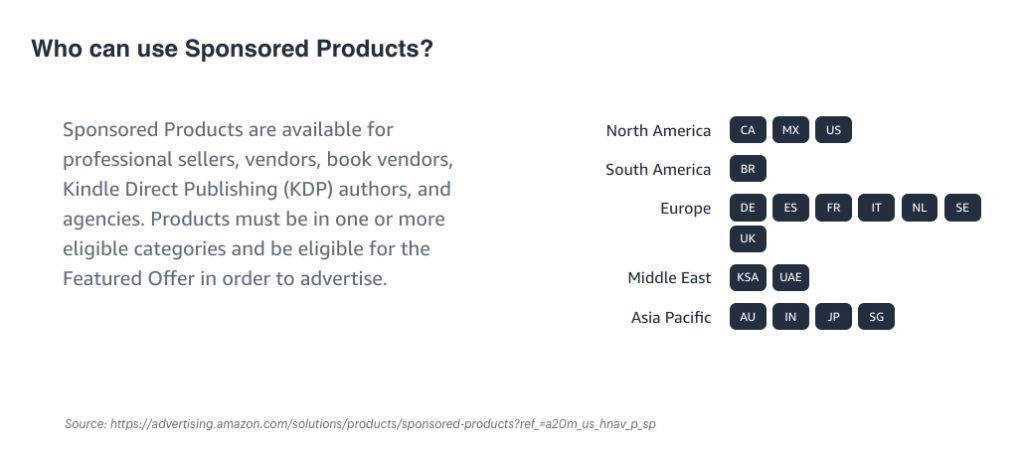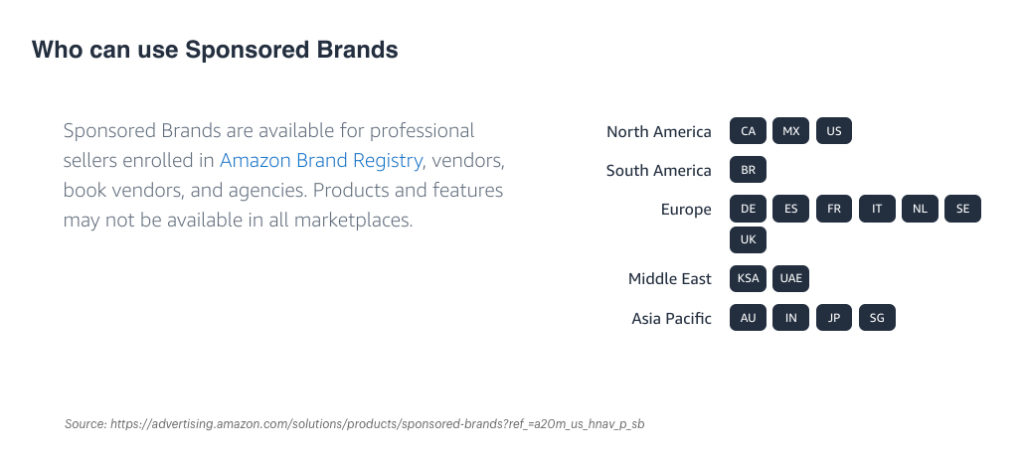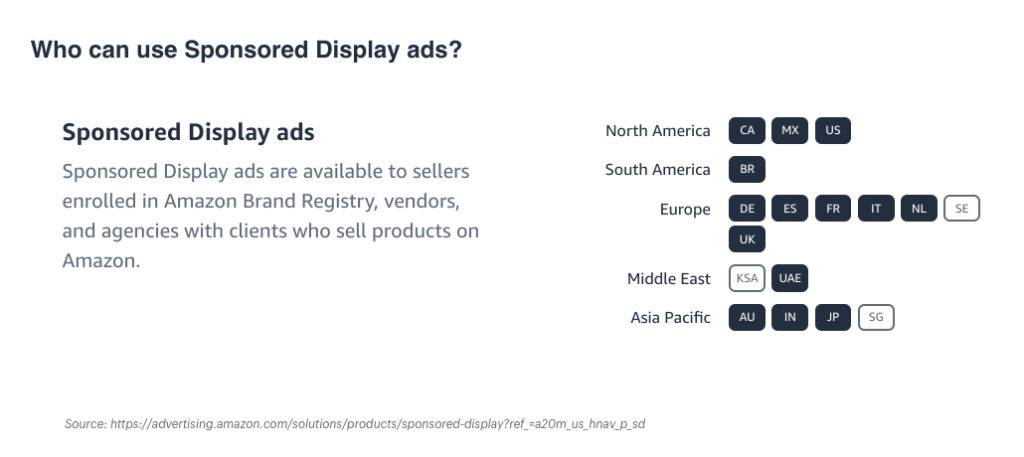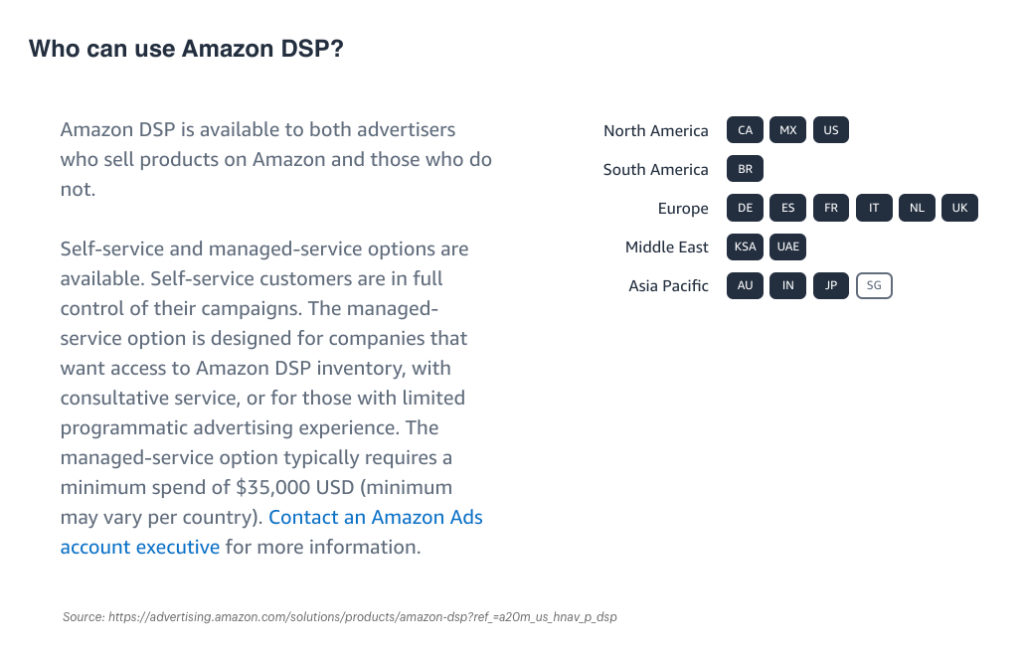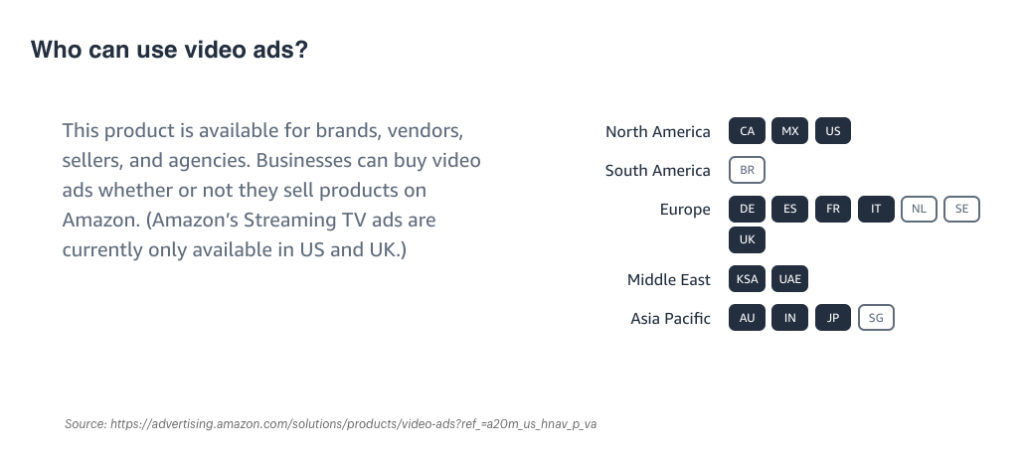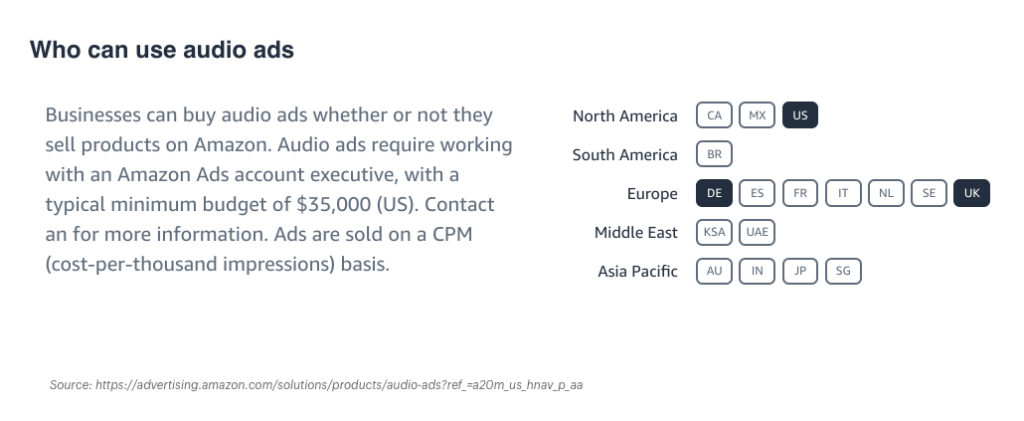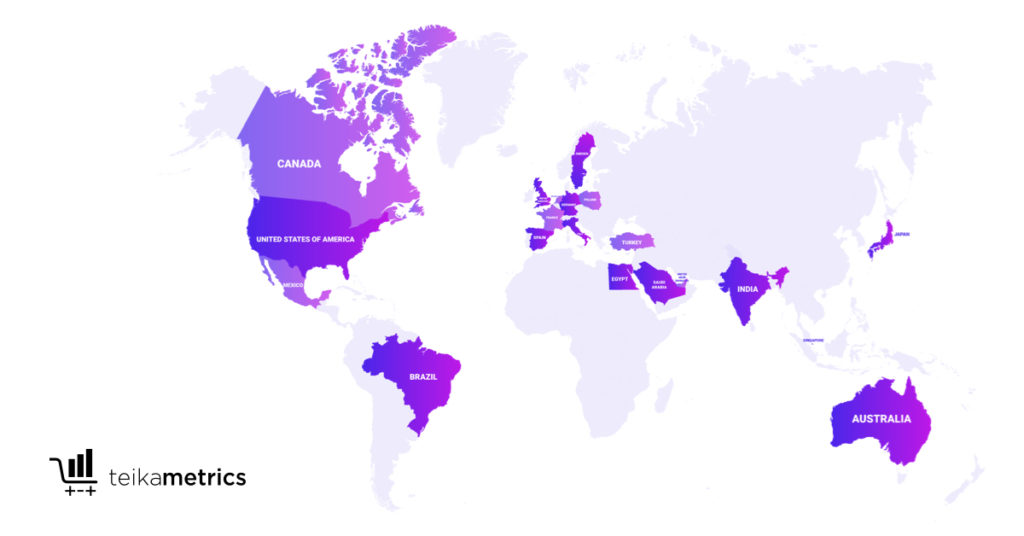How many marketplaces does Amazon have? Amazon offers almost 400 million products across 18 marketplaces, yet there are still so many sellers and brand owners that only sell in the US, on Amazon.com. We’re going to dive into each marketplace – the stats, the number of sellers, and more, to give you more information about selling internationally.
Amazon’s marketplaces are broken into regions, and in each region are a collection of countries and their respective marketplaces. Let’s look at the regions, and the countries that compose them. While regions are groups of countries, in almost all cases, you have to have a seller account in each marketplace in order to sell there.
Amazon North America
Amazon North America is made up of the United States (amazon.com), Canada (amazon.ca), and Mexico (amazon.mx). You can sell on all three marketplaces through an Amazon Unified Account. Unlike most regions, a Unified Account lets you share listings and manage inventory across all three North American marketplaces. Create the listing on one of the three marketplaces, and the listing appears on the other two. You can switch between the marketplaces in the drop-down menu at the top of your Seller Central dashboard. There is no need to have accounts in each North American marketplace. If you do, each one will have its own Unified Account, making things messy.
You can change your listings and prices per marketplace, as the listings are marketplace-specific.
Amazon.com Information 🇺🇸
Founded in 1994 as a book selling platform, Amazon.com in the US was the first Amazon marketplace. It’s the most established marketplace in terms of the number of sellers there, and the traffic the marketplace gets. Amazon.com was the first marketplace to roll out all of Amazon’s ad products, and is a great starting point for any new seller or brand owner. The biggest downside is that it’s very competitive, and getting to Page One can be difficult when you’re not an established seller.
Amazon.ca Information 🇨🇦
Amazon’s Canadian marketplace, while smaller than .com, is often the next logical choice for a seller or brand owner who is exclusively selling on the US marketplace. Canada has roughly 10% the population of the US, but the marketplace has far less competition than .com. If you sign up to sell on .ca, you’ll have to deal with sending inventory into Canada, but through the North American Remote Fulfilment program, goods are shipped into Canada from the US. There are people who say that you can make more by sending inventory into Canada, but the simplicity associated with Amazon taking care of the shipping, taxes, and duties makes NARF a clear choice for many brands.
Amazon.mx Information 🇲🇽
A NARF account lets shoppers in Canada and Mexico see your listings, but lots of shoppers prefer to buy in their own marketplace. It’s certainly simpler to just have your .mx listings though your North American unified account, and since you can change the listing copy, you can translate it to Spanish. Make sure you use professional translation services. Google Translate doesn’t do the job. Another benefit to having a true Amazon.mx account is that you can ship items to FBA in Mexico, reducing delays and damaged packages. We did a great webinar with Patricio Tellez from ALGO+ that gives you great tips on selling on Amazon’s Mexican marketplace.
Amazon Europe
Prior to January 1, 2021, Amazon.co.uk was part of the Pan-European program with Amazon and you could sell on all EU marketplaces while storing your inventory in one country – and many sellers and brand owners chose the UK. With Brexit, the Amazon UK marketplace split from the European Union, so the UK isn’t technically part of Amazon Europe, so we’ll address that further down the post. The rest of the European countries can be fulfilled from a single country in the EU, but Amazon recommends that you retain a unified account, and many experts say to just split your inventory between the UK and another country in the EU. You’ll need a European VAT to sell in the EU countries, and choosing where to get your VAT is a topic for another post. Let’s look at the European marketplaces and the opportunities there.
Amazon.de Information 🇩🇪
Amazon’s marketplace in Germany launched in 1998 and is one of the largest Amazon marketplaces in Europe. German shoppers are familiar with the way Americans market and communicate, but keep in mind that your products need to be listed in German, and product instructions have to be in German. While Amazon.de is one of the first marketplaces brands expand to, competition is still relatively low, and demand is high. More than 80% of German people use Amazon to buy products. Keep in mind that German shoppers don’t like extravagant marketing language or flowery listings, so make sure that you use professional translation services with native German speakers so that you can translate and localize your listings for success.
Amazon.it Information 🇮🇹
Launched in 2010, Amazon’s Italian marketplace is smaller than most, but there is a real opportunity for products that are actually made in Italy. In fact, there’s a “Made in Italy” marketplace of its own. Listings, of course, need to be translated into Italian. A few things to note – Italian online shoppers tend to be slow to make decisions, using a wishlist or even their shopping card to evaluate items and think about purchasing. However, they are patient and don’t expect lightning-fast shipping, as long as shipping is free or the rates are very low.
Competition on Amazon.it is low, and mobile device shopping is on the rise.
Amazon.es Information 🇪🇸
Amazon’s Spanish marketplace launched in 2011, and is a relatively small marketplace. Additionally, Spain’s VAT registration process is said to be the most difficult of all the European marketplaces. Spanish culture is very regionalized so you should make an effort to understand the different customs in different parts of Spain before you launch there. Listings should be translated into Spanish. Fashion, as of 2019, was the top online shopping category in Spain, unlike most European marketplaces where consumer electronics are the most popular category.
Amazon.fr Information 🇫🇷
Launched in 2000, Amazon’s French marketplace is the third-largest European marketplace, after the UK and Germany. All listings, labeling and packaging must be in French, and French shoppers are very choosy about what they buy. Doing the research about French buying behavior and super localizing your products is the only way to be successful on Amazon.fr. Consumers in Belgium can shop on Amazon.fr.
Amazon.nl Information 🇳🇱
Amazon Netherlands was initially launched in 2014, but only sold Kindle readers and ebooks. In March 2020, a bigger Amazon marketplace opened up and consumers in the Netherlands didn’t have to shop on Amazon.de anymore. There is low competition on Amazon.nl, and many experts recommend starting in the Netherlands, despite the lower volume, because Pan EU fulfillment might be easier out of the less crowded space. Listings should be translated into Dutch.
Amazon.se Information 🇸🇪
Amazon launched its Swedish marketplace in 2020, to an already tech-savvy population. The Swedish government has facilitated internet usage among the people, for a “completely connected Sweden,” so that, plus Sweden’s flourishing economy, made it a clear choice for a new Amazon marketplace. Fashion and consumer electronics are the top categories in Sweden, and of course, listings need to be translated.
Amazon.pl Information 🇵🇱
Launched in March of 2021, Amazon’s Polish marketplace shows a lot of promise to cross-border sellers. Fashion brands tend to do particularly well on Amazon.pl. Polish shoppers look for low shipping costs, free returns, low prices and discount codes. Listings should be translated, of course, though many Polish consumers shopped on Amazon.de prior to the marketplace launching in Poland. Do know that there’s a more predominant ecommerce marketplace in Poland, called Allegro, and another marketplace called Ceneo, which is another marketplace to research prior to starting your Amazon.pl store. Note that while Poland is part of the EU, the currency is the Polish Złoty.
Amazon.tr Information 🇹🇷
Amazon’s Turkish marketplace launched in 2018, with Prime becoming available in 2020. Prior to the launch of Amazon Turkey, customers could shop on a translated version of Amazon.de. It’s important to do proper research prior to launching on Amazon.tr. In a webinar with Jana from YLT Translations, we learned that Shoes and Clothes and Personal Care/Cosmetics are hot categories along with the standard Home and Kitchen and Consumer Electronics categories. Also, Turkish shoppers tend to make purchases on desktop computers or tablets, so it’s wise to optimize for that shopping experience, rather than mobile.
So that wraps up the EU, but what about the UK?
Amazon.co.uk Information 🇬🇧
Since Brexit, the UK is not part of the EU, and therefore is not part of the Pan EU marketplace on Amazon, unlike the last several marketplaces we discussed. This created a big shakeup with a lot of cross-border sellers and brand owners that were selling Pan EU and fulfilling out of the UK, which is the largest European Amazon marketplace.
Sellers and brand owners can’t use UK FBA warehouse operations to house their goods to sell to other countries, so having a dedicated .co.uk presence is necessary. This created the need for separate VAT registry in the UK.
One of the biggest benefits to Amazon.co.uk is that you don’t have to translate your listings to another language, but you may want to tweak them a bit based on the research you do about UK buying behavior. As of 2019, almost 90% of UK shoppers used Amazon, so if you get your listings right and run the right advertising, you can be very successful there.
Amazon Middle East
Until Amazon decided to set up shop in the Middle East, Souq.com was the preferred ecommerce marketplace. Amazon acquired Souq in 2017, and started setting up marketplaces in first the United Arab Emirates, then Saudi Arabia, and now, most recently, Egypt. In Amazon’s own information, it says that brands that use FBA in the Middle East can appear in the International Brand Pavilion, which they say is “a dedicated storefront to help global brand owners market, sell, and deliver innovative products to Amazon customers in the Middle East.” Let’s take a look at the Middle Eastern marketplaces.
Amazon.ae Information 🇦🇪
The Amazon marketplace in the United Arab Emirates provides no language barriers. No need to translate your listings from English. Launched in 2019, Amazon.ae’s top category is consumer electronics, but many luxury brands do well there because of the country’s affluent population. There are a lot of sellers on .ae already, so protecting your brand is particularly important on this growing marketplace.
Amazon.sa Information 🇸🇦
Launched in 2020, Amazon’s Saudi Arabian marketplace is a rebranded portal of Souq.com. Saudi Arabia is one of the 20 wealthiest countries by spending power, and has high internet use. The site is available in Arabic and English, meaning you can have your English listings there and access Seller Central in English, but it would be wise to translate your listings into Arabic. People who had already been selling on Souq were able to transition their accounts to Amazon.
Amazon.eg Information 🇪🇬
Amazon.eg launched on September 1, 2021 as Amazon’s 20th global marketplace. As Souq’s last local operation, sellers were able to log into Amazon via their Souq credentials to get their Amazon.eg account set up. Amazon Egypt started off running FBA in the smaller market, though Prime is not yet available. A smaller market, Amazon Egypt is competing with Noom and Jumia, but experts seem sure Amazon will be the market leader.
Other Amazon Marketplaces
Amazon.jp Information 🇯🇵
Launched at the end of October 2000, Amazon Japan is the third-largest Amazon marketplace worldwide. The opportunity there is great, but competition is very much a factor when you think about expanding to this marketplace. Of course, professional translation services will be needed. The Japanese language is complex and very contextual, so you’ll need to pick a service that has fluent Japanese speakers/writers so that you can build trust in your brand and make your listings appeal to consumers. 71% of Japanese shoppers do their purchasing online, so setting up a presence there makes sense.
Amazon.com.au Information 🇦🇺
Amazon launched its Australian marketplace in 2017. Expected to be a booming success, Amazon.com.au didn’t grow as fast as many experts predicted. eBay is the most popular online marketplace in Australia, followed by Amazon. However, in 2019, the Australian marketplace grew 52% year over year in terms of average monthly users, and sales increased by 3.8%. With New Zealand shoppers now using Amazon.com.au, growth should continue.
Amazon.in Information 🇮🇳
Launched in June 2013, Amazon’s Indian marketplace has seen its ups and downs. In December of 2020, Amazon India said that 150,000 new sellers had joined the marketplace, but in April of the same year, the numbers declined drastically because of lockdown. However, India has 620 billion active internet users and is expected to have 850 by 2030, so as world conditions improve, so should opportunities on Amazon.in. Consumer Electronics, Baby Items, and Clothing are very popular categories, and properly translated listings and aggressive advertising strategies are necessary for success. Note that you’ll need a third-party logistics solution to participate in FBA in India.
Amazon.sg Information 🇸🇬
Amazon Singapore launched in October 2019 with almost 500 3p sellers. It’s had FBA since its first day, despite how small the country is in terms of population. Amazon says that “Amazon.sg is an English-language experience, eliminating the need for translations.” Not all categories are available on the Singapore marketplace, and in some existing categories, like Automotive and Film and Movies, approval is required.
Amazon.br Information 🇧🇷
In Brazil, Amazon launched in 2012 to a large, wealthy country. The marketplace has really grown in the world’s 6 most populous country, but there are some things to consider if you’re planning to launch on Amazon.br. First, import taxes are very high, and don’t include customs fees. Most Brazilians use their phones to make purchases on Amazon, and most use credit cards. Fashion and accessories, entertainment, and beauty are the most popular categories.
Sellers and brand owners should plan strategically on how to expand internationally, but know that Amazon’s global marketplaces are full of opportunities and challenges that will grow your brand presence across the world.
Amazon Ad Types By Marketplace
Not all ad types are available yet in all amazon marketplaces. Below are Amazon’s charts showing where you can use Sponsored Products, Sponsored Brands, Sponsored Display, DSP, video ads, and audio ads.
